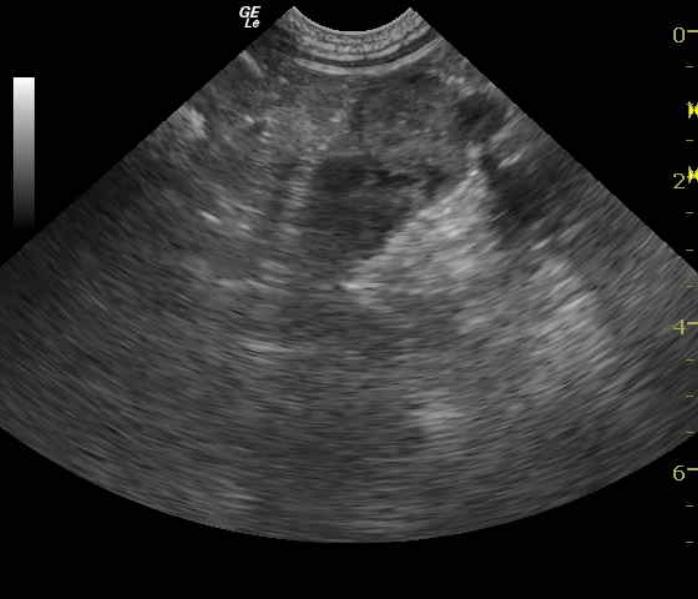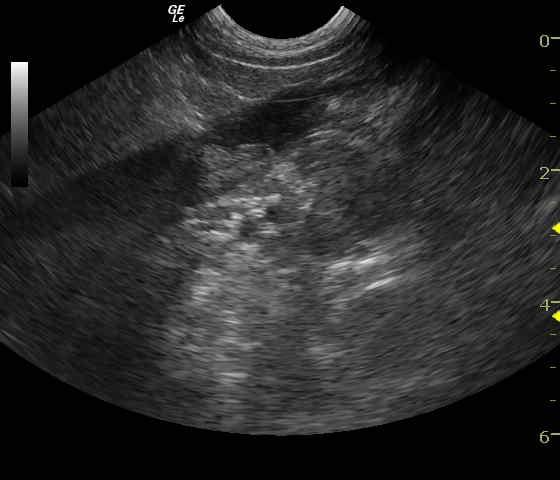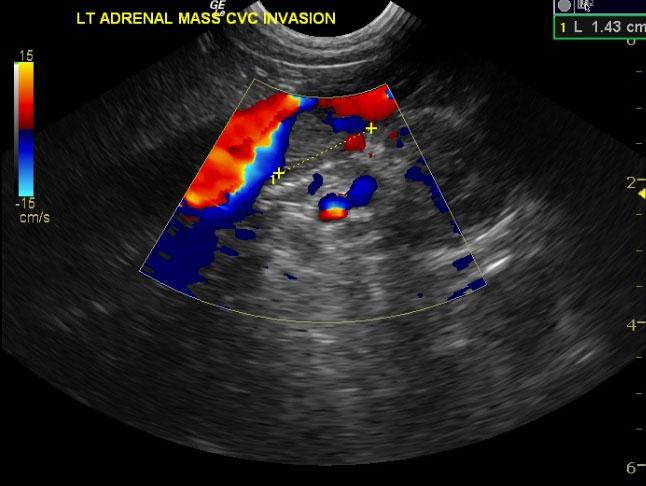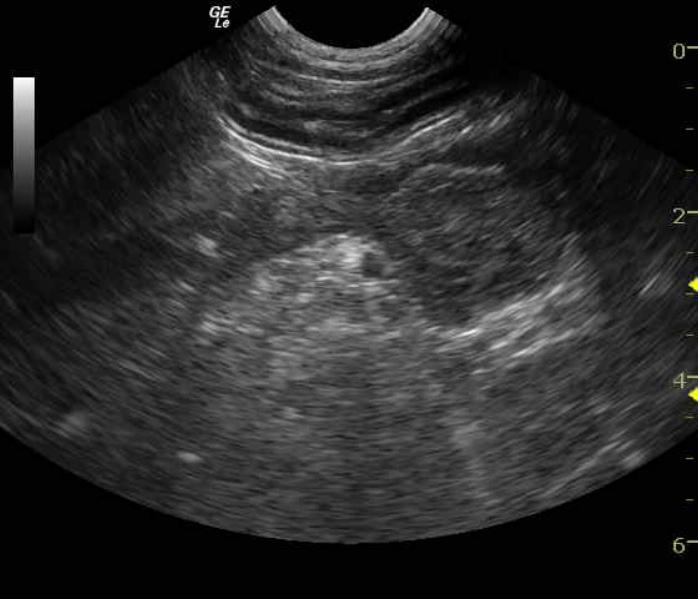12/2005: A 10 year old FS mixed breed dog with a 2 year history of pituitary dependent HAC, medically well controlled with mitotane, was presented for a routine recheck exam and sonogram. Her blood chemistry revealed hyperglobulinemia, hyperphosphatemia, hypertriglyceridemia, and hyperamylasemia. The CBC was within normal limits.
6/2006: The patient returned for her annual examination. Her blood chemistry revealed an elevated ALT enzyme activity, hyperphosphatemia, hyperamylasemia, and hypertriglyceridemia. The CBC was within normal limits. A urinalysis showed a high pH, but the urine microalbumin was high. The urine culture was negative. A T4 and free T4 were both within the normal reference range. An adrenal panel performed by the University of Tennessee found elevated baseline cortisol and elevated androstenedione concentrations. There was elevated post ACTH cortisol, elevated progesterone, elevated 17-OHP, and elevated aldosterone, thereby indicating increased adrenal activity.
7/2006: An ACTH stimulation test was performed one month later, and results were consistent with hypoadrenocorticsm. She was treated with fludrocortisone and steroids.
8/2006: An ACTH stimulation test was performed one month later. The results were consistent with a diagnosis of iatrogenic hypoadrenocorticism.
11/2006: A blood chemistry performed a few months later revealed hyperphosphatemia, hypertriglyceridemia, hyperlipasemia, and hyperamylasemia. The CBC and TT4 were within normal limits. The ACTH stimulation test results showed elevated cortisol concentrations, both pre- and post-administration of ACTH.
3/2007: The blood chemistry was repeated, and revealed hyperbilirubinemia, hypertriglyceridemia, hyperphosphatemia, and hyperamylasemia. The CBC and TT4 were again within normal limits and the ACTH stimulation again showed elevated cortisol concentrations (pre and post- administration of ACTH.)



